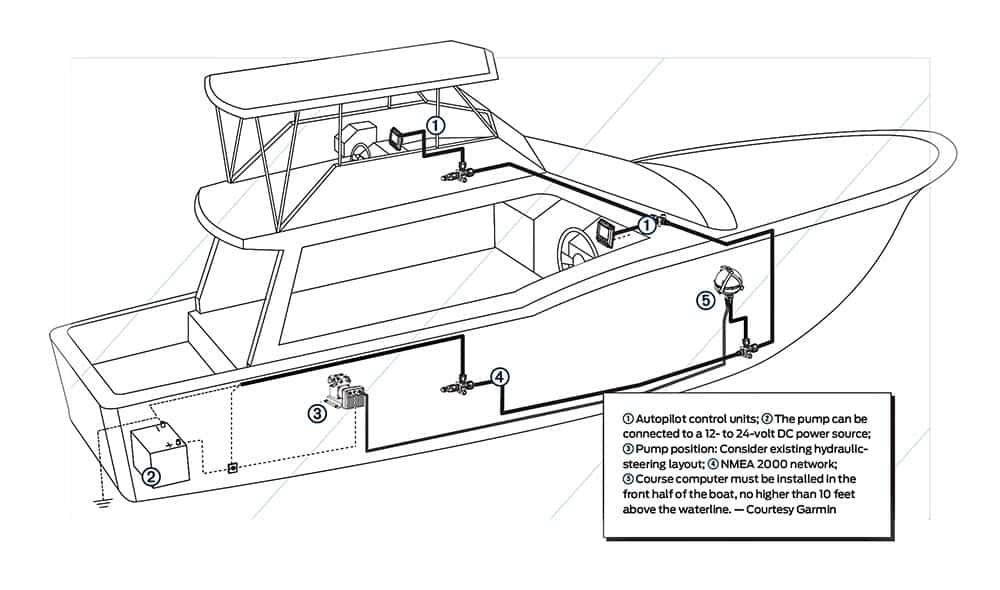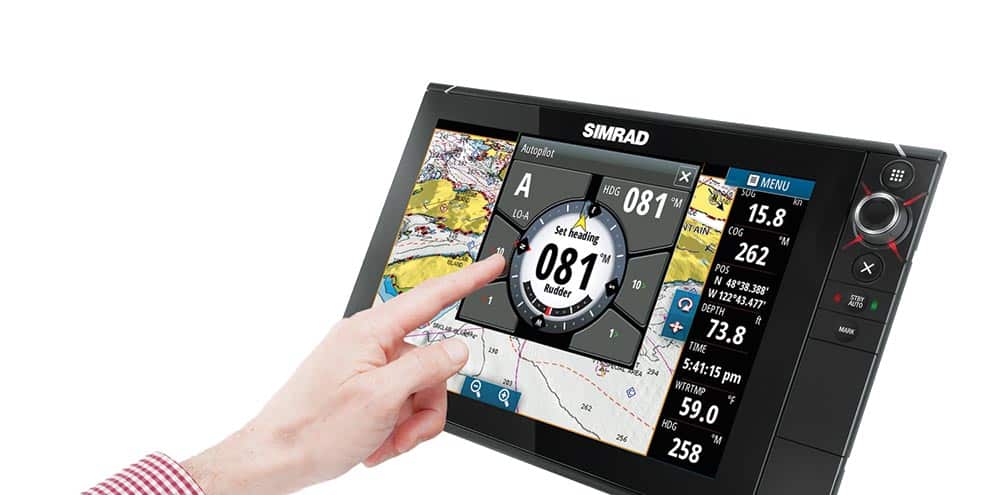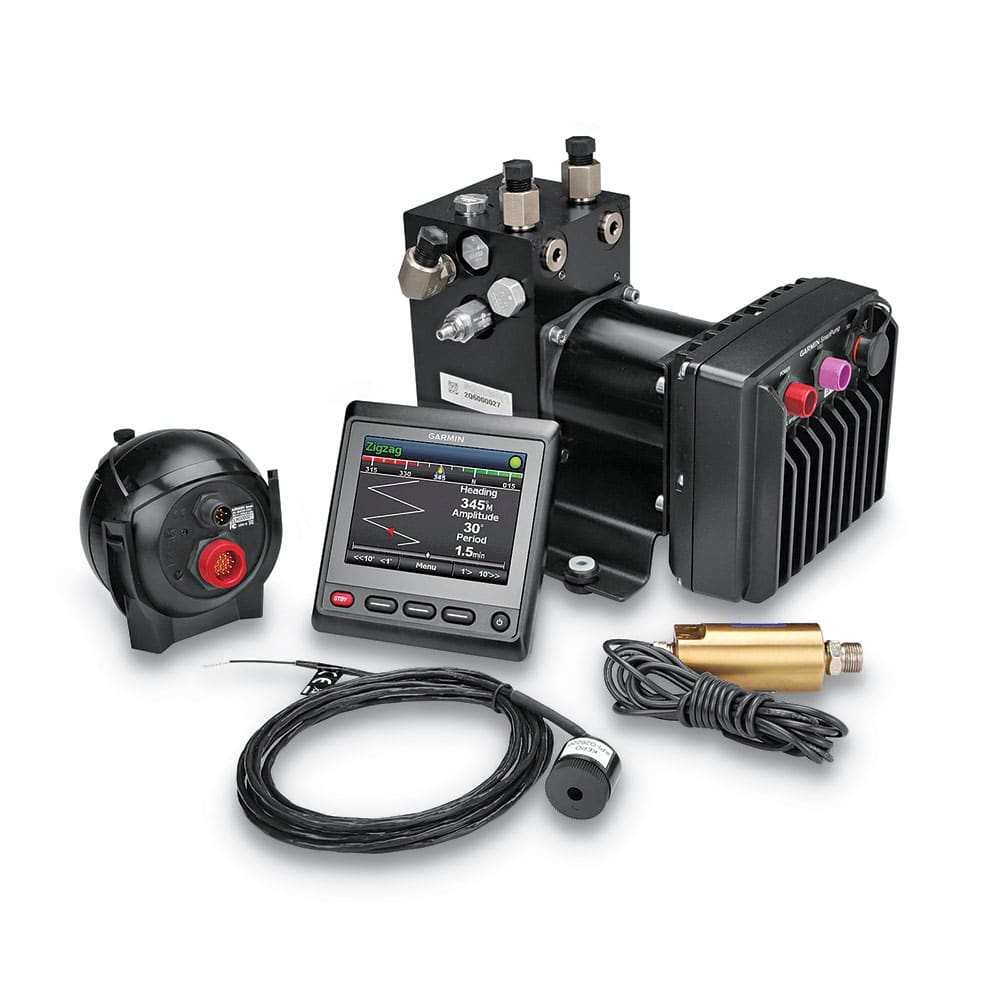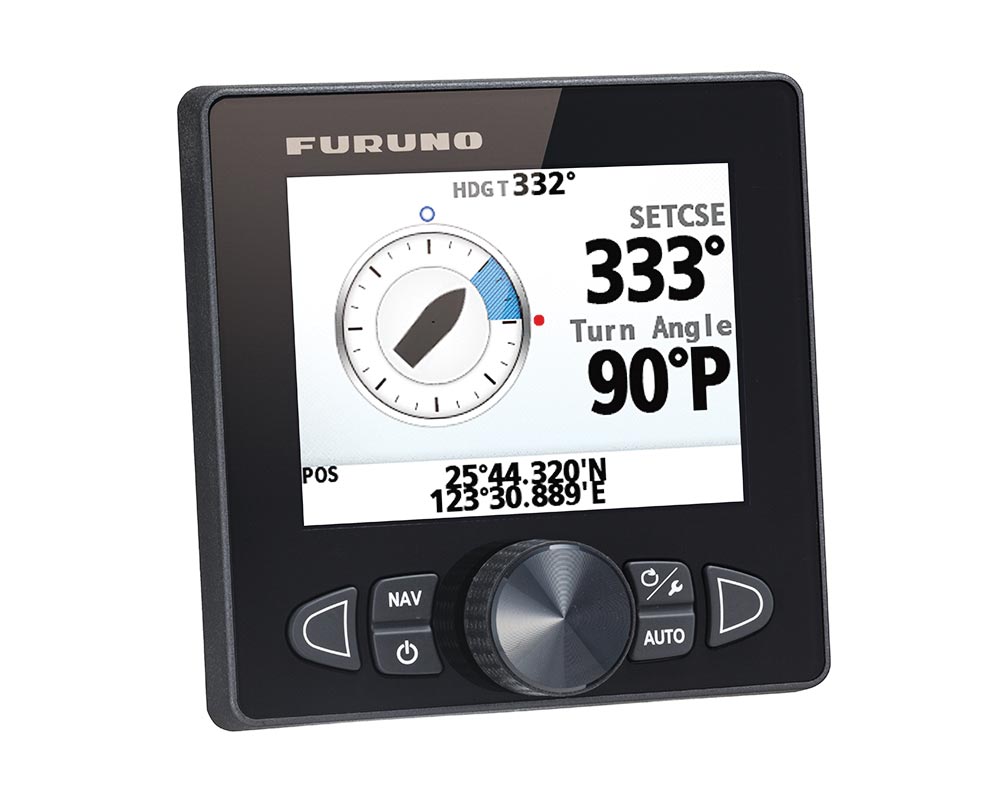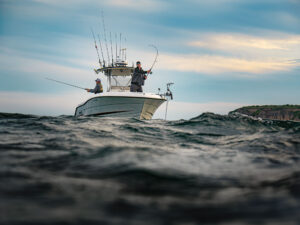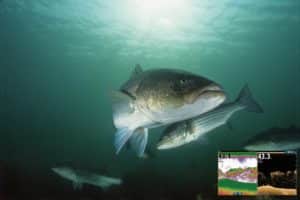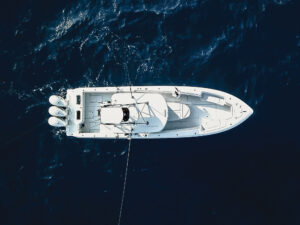Autopilots really seem complex. They might be the best angling addition next to a sounder for many offshore fishermen, but what about all those pieces — a heading sensor or fluxgate compass, hydraulic pump, course computer/power source, and a control head? And what about all that calibration — teaching the unit to determine a heading and sense the characteristics of your boat?
Thankfully, electronics companies have taken steps in the past five years to simplify autopilots, making them more effective and easier to set up and integrate with your other digital fishing tools. But before we go forward, let’s go back.
Better Direction
For many years, outboard-powered boats, which comprise the majority of recreational-fishing vessels, made for a difficult autopilot platform. Autopilots must know which way the lower unit and prop on an outboard are turning to control its direction. For years they achieved that using a standard rudder-feedback unit.
“The rudder-feedback unit was purely a sensor that measured the angle of the outboard (or rudders) so the course computer could send a command to turn one way or the other,” says Jim McGowan, Raymarine marketing manager. “Normally that [unit] would be attached to the hydraulic cylinder pushing the outboards or, on some setups, it was attached to the transom.”
The sensor — often a basic rheostat — was difficult to seal. Saltwater environments drastically shortened its lifespan.
Simrad and TR-1 (a company later bought by Garmin) introduced the earliest versions of “virtual rudder feedback” systems in the early to mid-2000s. Within the past decade, all the major marine-electronics manufacturers of offshore products have launched VRF autopilots.
Even Humminbird — perennially popular for its freshwater and inshore products — has stepped into the ring with the new SCS 110 autopilot, compatible with the blue-water ION multifunction display.
Systems Improvements
As autopilots have become more reliable for outboard setups, manufacturers have focused on specific upgrades to various parts of the systems.
* Raymarine, with its new Evolution autopilots and Hydro-Balance technology, has worked on algorithms that reduce the amount of calibration needed, and also improve steering reliability.
* Simrad has pushed to provide a wider variety of pilot-control options, including a separate control board, a dedicated gauge, a joystick and multifunction display integration.
* Garmin improved its pump system with the introduction of the SmartPump and its 400-watt brushless motor.
* Furuno developed its Safe Helm mode (allowing the user to override the pilot quickly, similar to Garmin’s Shadow Drive) and Power Assist capability.
All have also adapted autopilots to the new joystick-control systems for outboards, such as Yamaha’s Helm Master, and — along with Simrad — they have improved integration with their own multifunction displays. Now, instead of requiring a separate control head or gauge, many autopilots can be adjusted through the same display where you watch the sounder or follow a plotter contour.
For instance, Simrad’s new NSS evo2 multifunction displays offer full pilot control and full integration with other display functions. “One of the best demonstrations of integration is when you’re shorthanded fishing: Think of the pilot as fully integrated with your plotter and fish finder. You can mark a spot on your fish finder (when you troll over a baitball, for instance), and the autopilot can take you back to that mark,” says Mike Fargo, product-line director for Simrad. “You used to have to know the heading you wanted or put in a waypoint and tell the pilot to go there. Now you can tell it to go ‘here’ on the sounder. You take out that extra step.”
Setup and Sensors
A traditional autopilot also required a lot of calibration, Raymarine’s McGowan says. If the autopilot is installed without a sea trial, the boating angler must take on that chore. Calibration involves a compass swing, which means repeatedly circling the boat at a specific speed, allowing the heading sensor to detect the deviation aboard the boat. Then the angler must help the autopilot learn the boat’s turning behaviors by conducting repeated incremental turns.
“The Evolution [autopilot] figures it all out on its own,” he says. “We’ve eliminated all the post-installation sea-trial requirements.”
McGowan explained that this technology sprang from two innovations. First, Raymarine improved the autopilot’s algorithms for steering and sensing, drawing from its parent company FLIR’s proprietary knowledge about motion control. FLIR makes thermal cameras like the ones used by many police helicopters; those cameras must focus on a ground target and keep it in view regardless of how the target turns.
Second, the new Evolution comes with an all-solid-state sensor package, where previously less-reliable mechanical components existed.
Raymarine’s new Hydro-Balance technology looks at the inherent issues within hydraulic-steering systems — such as air in the lines and hose flexibility, which can cause the boat to wander — and teaches the autopilot to compensate.
Twists and Turns
Furuno’s NAVpilot 700 first emerged with a Fantum Feedback mode, using algorithms that provide the autopilot computer with course-adjustment information over time. “We take the output from the compass, and we differentiate it over time to dial in steering and predict what’s happening on the boat,” says Eric Kunz, Furuno senior product manager.
Furuno then initiated Safe Helm, adding two sensors that tell the computer when the steering wheel has been moved and in which direction. That mode suspends the autopilot when the captain grabs the wheel to avoid an obstacle, then re-engages the system.
Kunz saw an easy jump from Safe Helm to Power Assist mode, which involves bolting Furuno’s power-steering module on top of Accu-Steer pumps. With the sensors and the module, steering effort is greatly reduced.
Garmin’s SmartPump really shines with larger, multiple-outboard boats that generate heavier steering loads. The 400-watt brushless motor packaged with the hydraulic pump is much more powerful than industry-standard motors at 50 watts and below.
SmartPump also introduces safety features: Its brushless motor dissipates heat better, and the motor simply stops running if it experiences an amplifier failure, while other motors might initiate a dangerous hard-over turn.
Garmin also built SmartPump to detect the displacement of steering cylinders, so captains don’t even have to know what size hydraulic-steering pump they’re running.
As with all marine electronics, autopilot systems will likely evolve again by the time this column hits newsstands. So what’s next? Voice-recognition steering?
